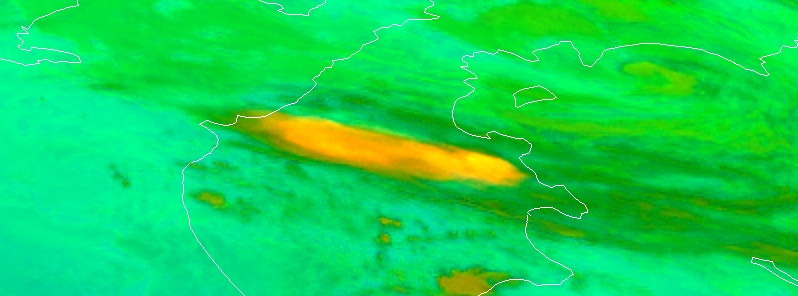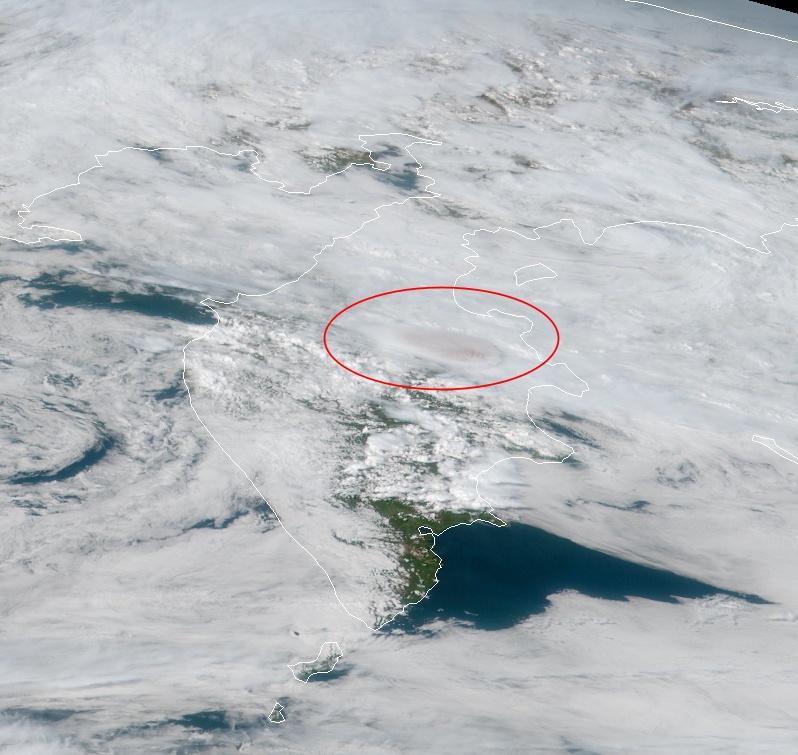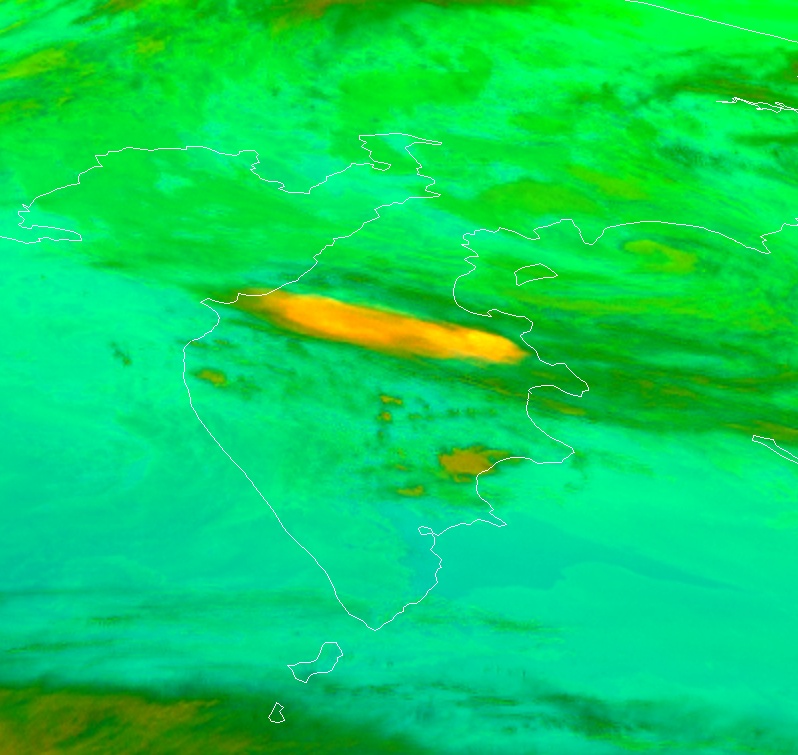Strong eruption at Sheveluch volcano on August 29, ash to 10.3 km (34 000 feet) a.s.l., Russia

A strong eruption took place at Russian Shiveluch volcano at 00:57 UTC on August 29, 2019, producing an ash column up to 10.3 km (34 000 feet) above sea level. Sheveluch is one of Kamchatka's largest and most active volcanic structures.
Volcanic ash emissions continued through the night.
According to satellite data, ash plume from last night's eruption drifted to the north from the volcano.

Eruption at Sheveluch volcano on August 29, 2019. Credit: JMA/Himawari-8. Annotation: The Watchers

Eruption at Sheveluch volcano on August 29, 2019 – SO2. Credit: JMA/Himawari-8. The Watchers
Growth of the lava dome continues, accompanied by strong fumarolic activity and hot avalanches, KVERT said today.
Explosive-extrusive eruption of the volcano continues, the observatory added. Ash explosions up to 10 – 15 km (32 800 – 49 200 feet) a.s.l. could occur at any time. Ongoing activity could affect international and low-flying aircraft.
Geological summary
The high, isolated massif of Sheveluch volcano (also spelled Shiveluch) rises above the lowlands NNE of the Kliuchevskaya volcano group. The 1 300 km3 (311.9 mi3) volcano is one of Kamchatka's largest and most active volcanic structures.
The summit of roughly 65 000-year-old Stary Shiveluch is truncated by a broad 9-km-wide (5.6 miles) late-Pleistocene caldera breached to the south. Many lava domes dot its outer flanks.
The Molodoy Shiveluch lava-dome complex was constructed during the Holocene within the large horseshoe-shaped caldera; Holocene lava dome extrusion also took place on the flanks of Stary Shiveluch.
At least 60 large eruptions have occurred during the Holocene, making it the most vigorous andesitic volcano of the Kuril-Kamchatka arc.
Widespread tephra layers from these eruptions have provided valuable time markers for dating volcanic events in Kamchatka. Frequent collapses of dome complexes, most recently in 1964, have produced debris avalanches whose deposits cover much of the floor of the breached caldera. (GVP)
Featured image: Eruption at Sheveluch volcano on August 29, 2019 – SO2. Credit: JMA/Himawari-8

second since Raikoke in July
I was near the base of Shiveluch on August 21, 22 and saw smoke coming out the top and front side with rumbling and falling rocks but it then quieted down for six days or so. Are there any photos of the eruption you could send me or refer me to? Lots of people with smart phones from Klyuchi must have seen it. It is a stunningly beautiful area.